Spring officially starts this week in Australia, on Friday 1 September. Signs of Spring are everywhere, especially in my region where the happy yellow daffodils, white jonquils and nodding snowflakes have been blooming their little bulbs off for the last two weeks. They are finally making an appearance in my garden. I find that I am smiling and murmuring happily to myself when I see each new bloom, the neighbours surely think I’m mad.
More yellow dots the landscape with dandelion flowers, which started popping up two weeks ago and are now flowering brightly all throughout the garden and lawns, to the great relief of my bees. I leave most of them in place as they are quite pretty and one of the first food sources for bees after the scarcity of winter. They are also a good source of food, but I have yet to harvest their nutritious leaves. Here’s a cute nursery rhyme in honour of the humble but very useful daffodil:
Daffy-Down Dilly has come up to town, in a yellow petticoat and a green gown.
This week also marks the turning of the season for the Ngunnawal people of my region, when the ‘true Spring’ season of Djambari sees grass tree flower spikes emerge, which have many uses for Ngunnawal people and are highly attractive to birds and native insects. This is also a time when eastern browns, tiger, and other snakes emerge for mating and display aggressive behaviour including ritualistic combat. We have already had a snake bite reported by our local vet this week. It was probably a tiger snake or a brown snake and due to the large number of snake bites my area gets, usually dogs but sometimes cats and horses, our vets have a large amount of anti-venom in stock. Humans have also been bitten but thankfully we haven’t had any deaths in recent history.
1 September is also the day we celebrate Wattle Day, commemorating Spring, and the the quintessential symbol of Australia. In honour of this occasion, this week’s article explores the wattle and our national Wattle Day, including its connection to war, particularly the World Wars, and to sports. Enjoy!
The Wonderful Wattle
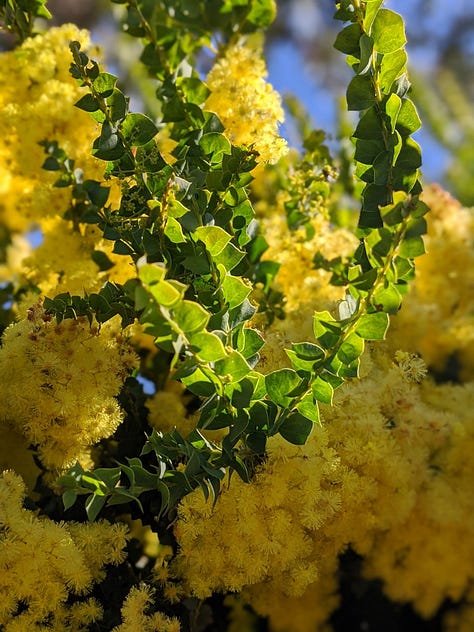
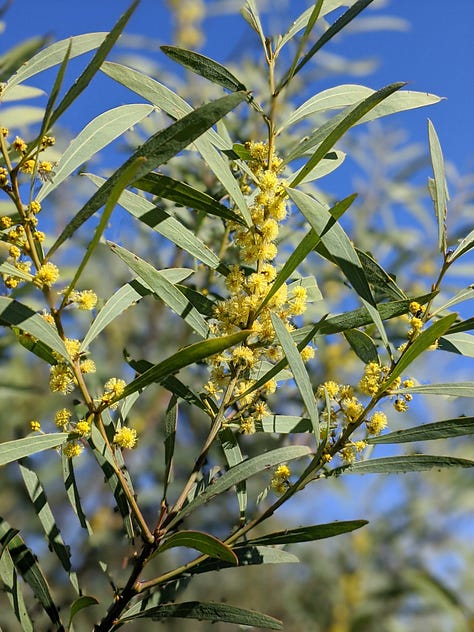
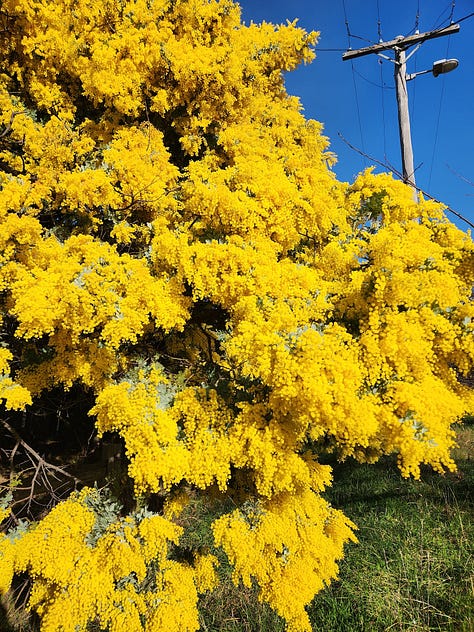
Australian wattle species, classified under the botanical genus Acacia, represent a remarkable and diverse array of flora with 1,069 recognized native species. Wattles are characterized by their intricate compound phyllodes, which are leaf stems that have evolved to look like leaves, increasing their ability to respond to and recover from water stress. They are also recognised for their striking inflorescences, ranging in colour from bright yellow to white.
Wattles are renowned for their ecological adaptability and diverse distribution across Australia's various habitats. They play an important role within Australia’s diverse ecosystems, from providing habitat to native fauna, stabilising soils and fixing nitrogen. Wattles are also a pioneer species and one of the first plants to germinate after a bushfire or other natural disaster. They are a very old species, a remnant from a time when Australia was part of Gondwanaland, some 35 million years ago.

The wattle holds deep significance in Australian First Nations cultures. In various First Nations communities, different species of wattle provided food, medicine and timber for tools and weapons, such as boomerangs, spear throwers, spears, digging sticks, parrying shields and clubs. A number of wattle species exude an edible, sweet-tasting gum that is high in tannins. This gum was sometimes used in a medicinal drink to remedy coughs, colds, and chest infections. It could also be used as a topical antiseptic, which was applied directly to cuts and abrasions in solid or powdered form. Smoke from burning some species of wattle leaves was used to treat diarrhoea, while some species of wattle produce DMT, a psychoactive alkaloid that may have been used in traditional ceremonies or rituals.
Wattle seeds from a large number of species are edible and were harvested for grinding into flour, roasted for a coffee-like drink or used as a flavouring.
Wattle was also used as a seasonal indicator:
In Bundjalung Country, the falling of wattle blossoms into the water is a signal that it it is time to no longer hunt the Eastern Long Necked Turtle, which will be entering its breeding season. Whilst the Wurundjeri people of the Greater Melbourne area of Victoria would similarly see the falling of the Silver Wattle (Acacia dealbata) as a signal that it was the time of year to begin harvest of eels.
Source: Koori History
We know that when the Black Wattle is flowering the Blackfish are running; when the seas are rough, the mullet are running; when the cobwebs are flying, it’s time to get swan eggs; as farmers know, the floods are coming when birds start nesting higher in the trees. Also we know it’s not the time to light a fire if you drop a leaf and the wind blows it away. Just a case of being more aware of your environment.
Trisha Ellis, Brinja Djuuwin woman, Chairperson, Cobowra Aboriginal Land Council. Source: Golden Wattle Flag
Wattle Day
Wattle Day, celebrated on 1 September in Australia, is a day dedicated to the appreciation and recognition of the country's national floral emblem, and our symbol of nationhood, the wattle.
I dreamed of a sunny country last night, a golden dream
Of wattles down the gully, and of gum trees by the stream;
Of dancing haze and sides of blue, no other land can show
Save this, our sunny country, where the golden wattles grow.
'Sunny Country' by Scottish-Australian poet and bush balladeer Will H. Ogilvie (1869 - 1963)The idea for Wattle Day as a national celebration of Australia’s nationhood, diversity and resilience, was first proposed by Archibald Campbell, a botanist and journalist, in 1908. He recognized the significance of wattle in Australia's landscape and culture, with its vibrant yellow blossoms symbolizing the arrival of spring and renewal. Campbell established the Wattle Day League in 1909 to lobby for a nationally recognised day of celebration to unite Australians in the nascent spirit of nationhood. Campbell's efforts gained momentum when various civic and cultural organizations, including schools and women's groups, embraced the idea of Wattle Day as a means to foster a sense of national identity and patriotism.

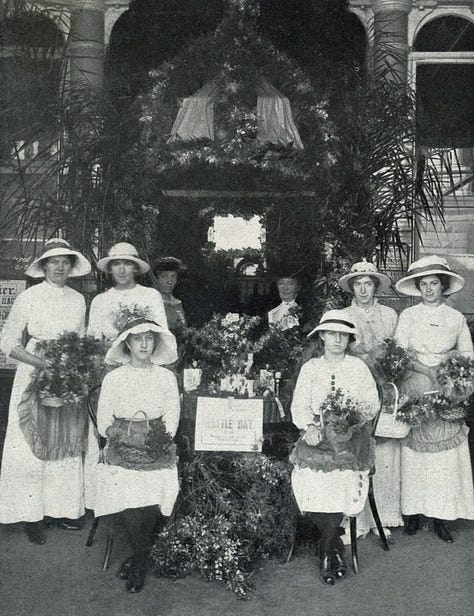
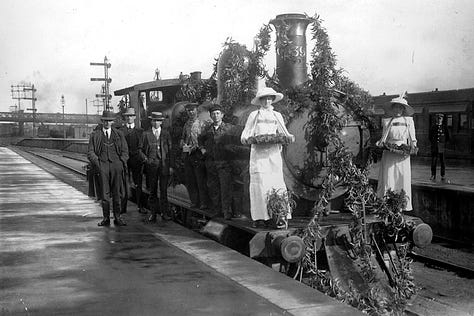
The first organized Wattle Day was celebrated in Sydney in 1910, where citizens adorned themselves with sprigs of wattle and participated in parades and festivities. The movement gradually spread across the nation, with people in different states embracing the concept. In 1912, the Golden Wattle (Acacia pycnantha) was incorporated as an accessory design in Australia’s Coat of Arms but the outbreak of World War I slowed down the momentum for gazetting the wattle as a national emblem and for a national Wattle Day.
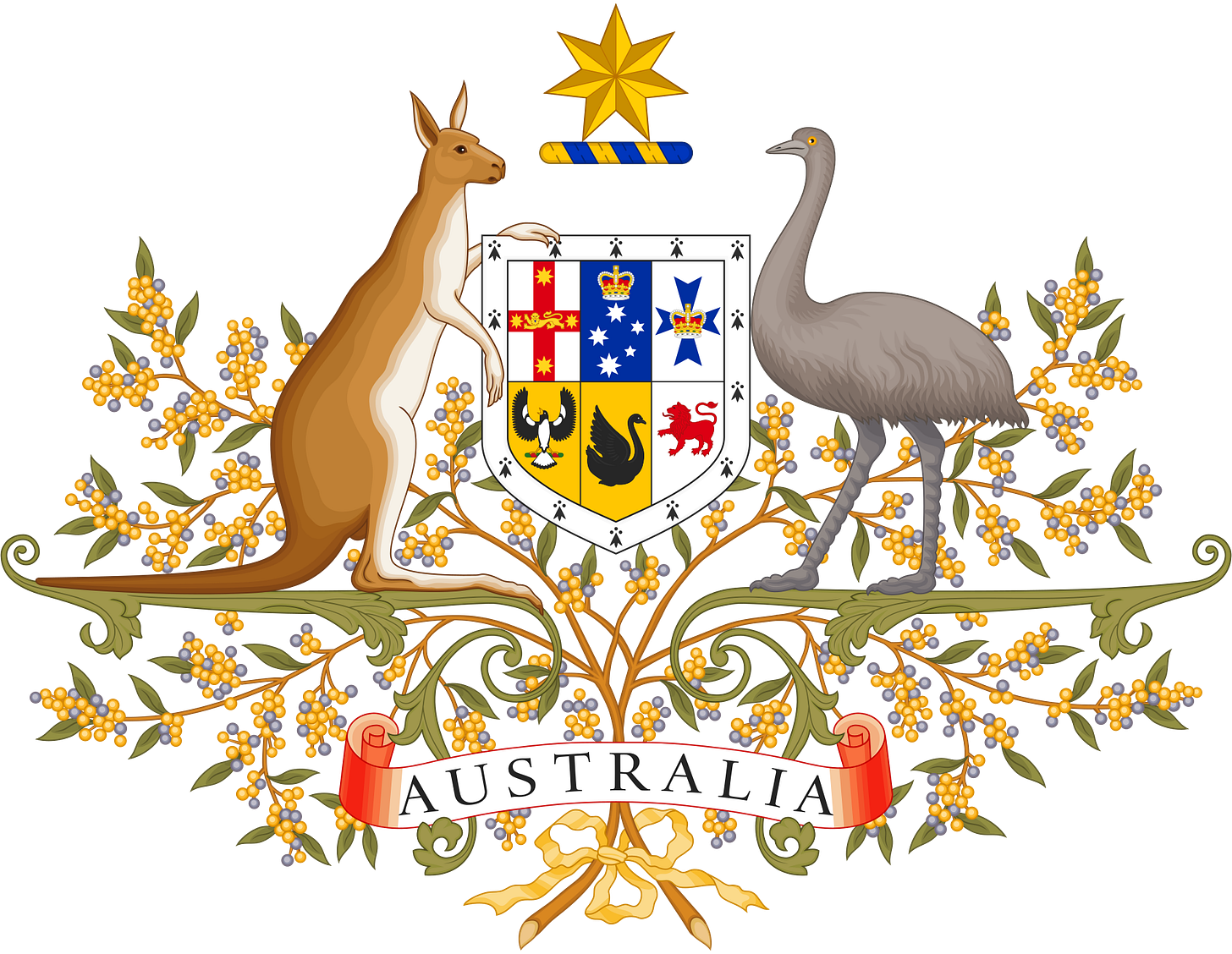
Efforts to gazette the national floral emblem and Wattle Day were revived in 1986 by Maria Hitchcock, an amateur botanist and horticulturalist from Armidale in NSW, with the help of ABC Radio’s Ian McNamara. Maria successfully lobbied the Labour government and succeeded in having the golden wattle officially proclaimed as Australia’s national floral emblem by the Governor General of Australia on 1 September, to mark the 1988 Australian Bicentennial Celebration. Maria then turned her attention to campaigning and lobbying the government for gazetting a national Wattle Day. Her efforts were again successful and a National Wattle Day was announced on 23 June 1992 by the Governor-General, Bill Hayden.
In 1998, Jack Fahy from Canberra in the Australian Capital Territory established the Wattle Day Association in the hopes of encouraging the observation of Wattle Day as a day for all Australians to celebrate Australia and being Australian.
As the wattle blossoms gold to welcome in the Australian spring, let us celebrate being Australian. We are extremely fortunate and blessed to be who we are and to live on our island continent.
Being Australian is, as with everything else, in a constant state of change. There is not a thing that you see, hear or think which is not changing. So let us not think that being Australian means conforming to a rigid set of values, traditions or stereotypes from the past. To be Australian 250 years ago would have meant being a nomadic Aboriginal; 150 years ago, it may have been a British settler.
Today we are a multicultural Australia with some wonderful traditions and systems. What will we be in 50 years time? “Australia’s national colours of green and gold are those of the Golden Wattle tree in flower.” It is also our national floral emblem. The land seems to have given us the symbol to celebrate being Australian and it is for ALL Australians.
Let us therefore celebrate being fortunate enough to have the gold and the beauty that is within us and within our land on National Wattle Day – the first day of Spring.
“Wear a sprig of wattle or something green and something gold.”
I hope that National Wattle Day becomes a celebration for ALL Australians and will lead us in this ever-changing world to aspire and evolve into being better Australians.
Jack Fahy, President, Wattle Day Association (1998 – 2007)
Over the years, Wattle Day celebrations have evolved to include various activities such as tree planting, community events, citizenship ceremonies, and art exhibitions showcasing the beauty of Wattle. Maybe one day Wattle Day could also be celebrated as Australia Day, reflecting a more inclusive and representative celebration of what it means to be Australian than the divisive and hurtful date we currently use.
The wattle is our only authentic national symbol – totally, unambiguously of this land. It is not conflicted or qualified in its identity or loyalty. It is eloquently, elegantly and undoubtedly Australian.
Terry Fewtrell, President, Wattle Day Association (2007-2019)
*Note: I will be exploring the issues with Australia Day in an article to be published closer to the current date of Australia Day in January… #changethedate.
A Symbol of Home and Honour
Wattle blossoms have a long history of use as a symbol of home and care for Australian troops deployed on war operations. During World War I, sprigs of wattle were often sent with letters to soldiers fighting abroad, as a reminder of home and boxloads of pressed wattle blossoms were sent to hospitals and distributed to injured ANZACs in England, France and Egypt.
The Red Cross and members of the Wattle Day League sold springs of wattle to raise money for the war effort. Australian Chaplain Walter Dexter scattered wattle seeds as he left during the evacuation of Gallipoli. He wrote:
“If we have to leave here, I intend that a bit of Australia shall be here.”
In an open letter to Australian troops deployed in the Dardanelles during World War I, poet Banjo Paterson refers to the wattle as a symbol of unity:
Fight on, fight on, unflinchingly,
Till right and justice reign.
Fight on, fight on, till Victory
Shall send you home again.
And with Australia’s flag shall fly
A spray of wattle-bough
To symbolise our unity —
We’re all Australians now.We’re all Australians Now (1915), by Banjo Paterson
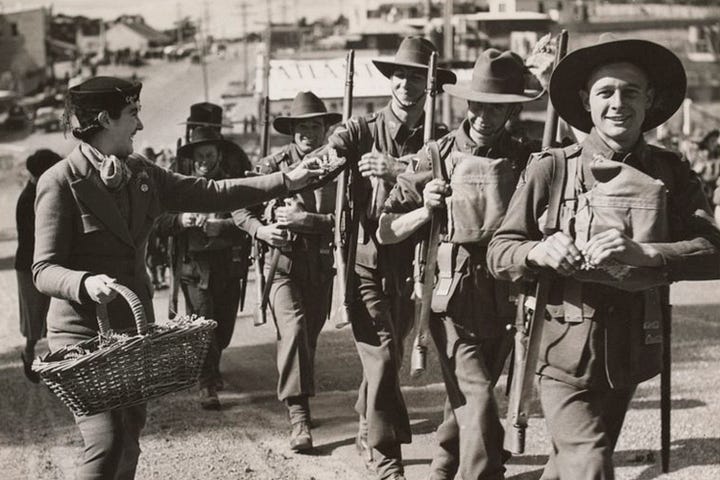

Many Australian artists and illustrators used wattle motifs in posters and postcards to cheer up soldiers serving overseas and as propaganda pieces, the most famous of those were the Wattle Blossom Babies created and illustrated by May Gibbs.

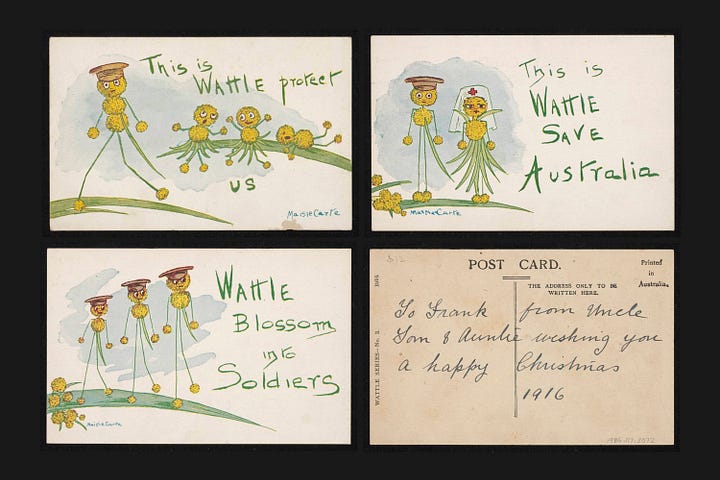
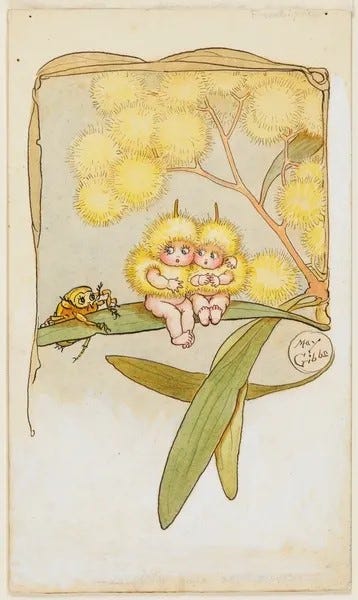
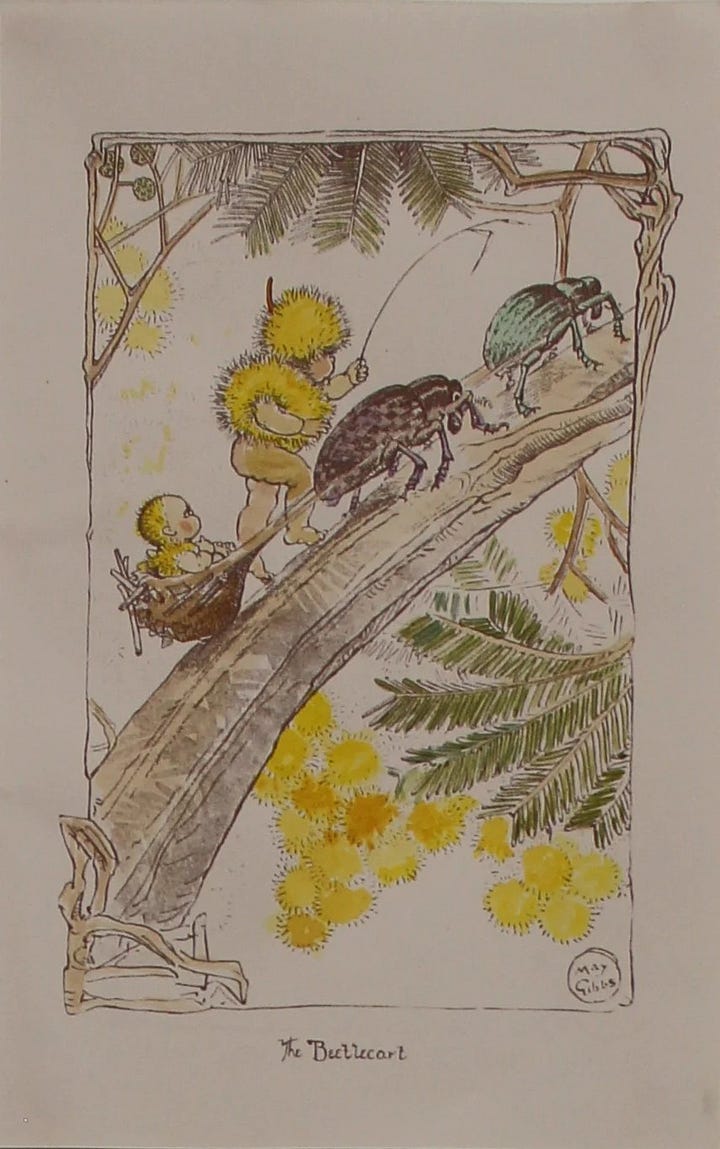
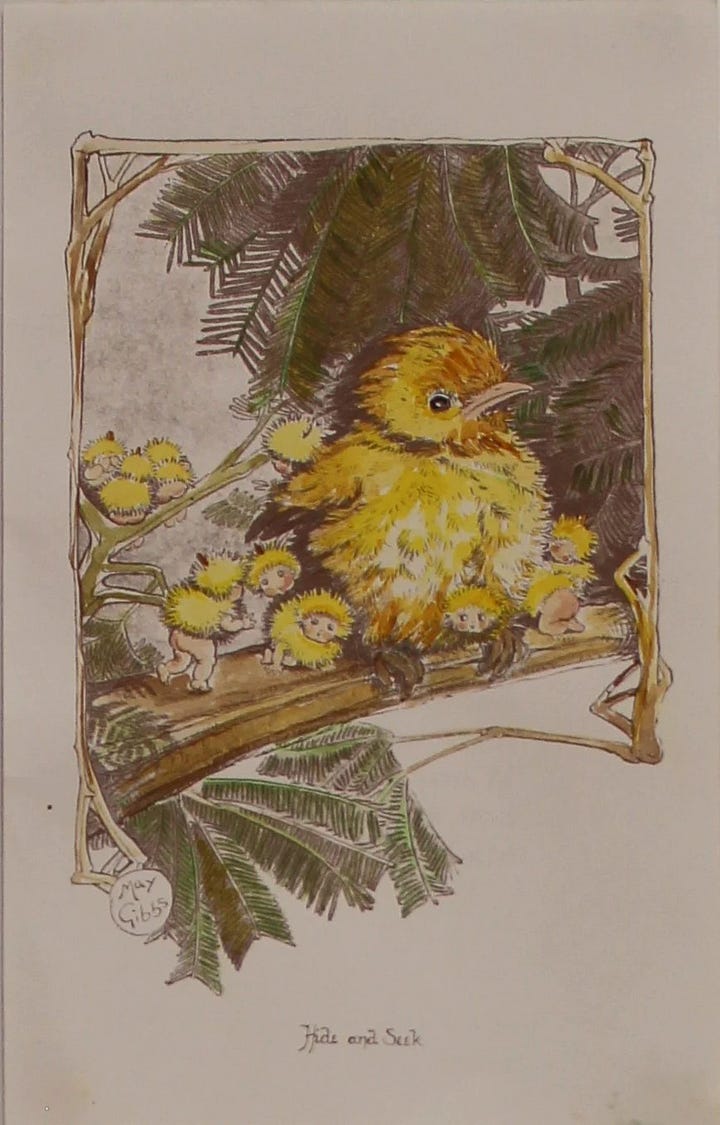
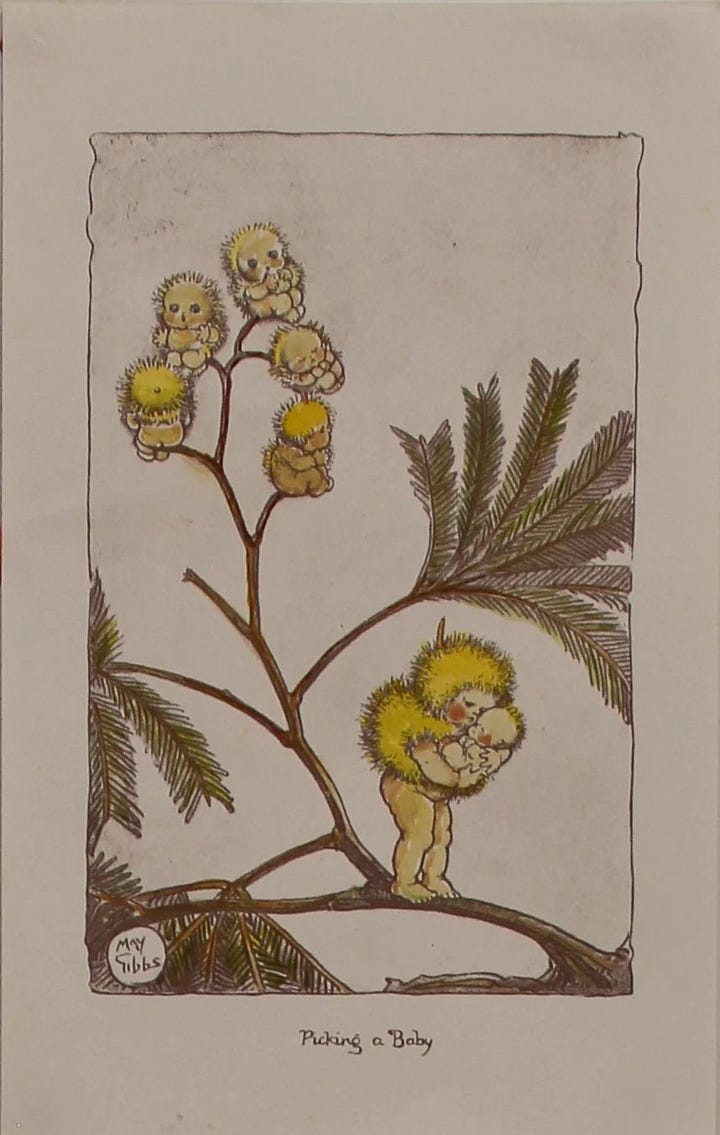
More recently, on 11 November 1993, the Unknown Australian Soldier was interred in the Australian War Memorial’s Hall of Memory with a sprig of wattle placed on the Tasmanian blackwood (Acacia melanoxylon) coffin.
Many of Australia’s military honours, awards and standards are decorated with wattle while the Order of Australia medals, insignia and ribbons are designed to symbolise the wattle blossom. Wattles are also depicted in the National Emergency Medal and the Australian Defence Force Long Service Medal.

Wattle in Sport
Since the late 1800’s Australia’s national sporting colours have been green and gold, in homage to the wattle and the eucalypts that are uniquely Australian. These two colours were first worn by the Australian cricket team on their 1899 English tour, who wore green blazers and a green cap, colloquially called the baggy green, detailed with a gold coat of arms.




The victory song of the Australian cricket team also features the wattle (swear warning):
Under the Southern Cross I stand, a sprig of wattle in my hand, a native to my native land, Australia you f*ing beauty!
The Australian Olympic team first wore an official uniform, which featured green and gold at the 1912 Olympics, followed by the national soccer team in 1924, the national rugby league team in 1928 and the national rugby union team in 1929.
In 1984, green and gold, specifically PANTONE 348C (Green) and PANTONE 116C (Yellow), were formally pronounced as the national sporting colours by the Governor-General. All of Australia’s national teams across all sports now wear green and gold uniforms to represent Australia.
Golden Wattle Flag
Debate in Australia has waxed and waned over the years regarding the relevance and appropriateness of our current flag, given its focus on our colonial past (it contains the British flag). There has been no consensus on what an alternative flag might look like but one front-line contender has to be the Golden Wattle Flag, which contains the national colours of green and gold, with a myrtle green background and a highly-stylised wattle blossom forming the shape of the Commonwealth Star (also known as the Federation Star).
“The Golden Wattle flag is emblematic of Australia’s national flower, national colours and national star. It was designed to represent strength in unity and to celebrate the natural beauty of the land which unites us all.”

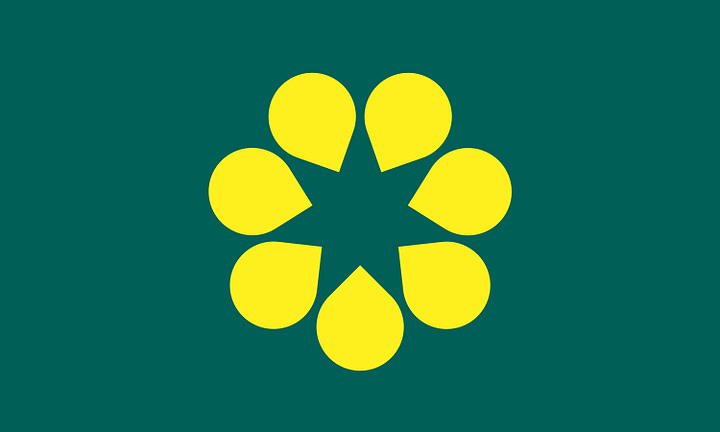
I hope you enjoyed this exploration of our wonderful wattle, its symbology and traditions. May you have a blossom-filled spring. Stay tuned next week as we take a fun look at the indomitable magpie in honour of a most Australian seasonal experience…. Swooping Season.





A truly interesting and well-researched article. Thank you.